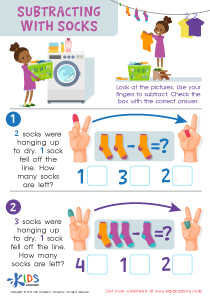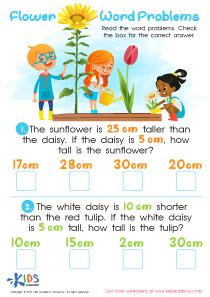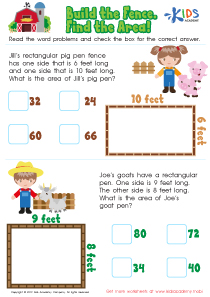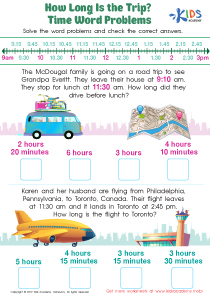Two-step Word Problems Worksheets for 8-Year-Olds
21 filtered results
-
From - To
Introducing our Two-step Word Problems worksheets, expertly designed for eight-year-old learners! These school downloadable worksheets offer an engaging way to enhance your child's mathematical abilities and problem-solving skills. Each worksheet is crafted to challenge young minds with two-step scenarios that integrate addition, subtraction, multiplication, or division. Perfect for both classroom and home use, these worksheets help reinforce key math concepts through practical application. Watch your child develop confidence and proficiency in tackling multi-step problems, setting a strong foundation for more complex math challenges ahead. Equip your child with the tools for success in math and beyond!
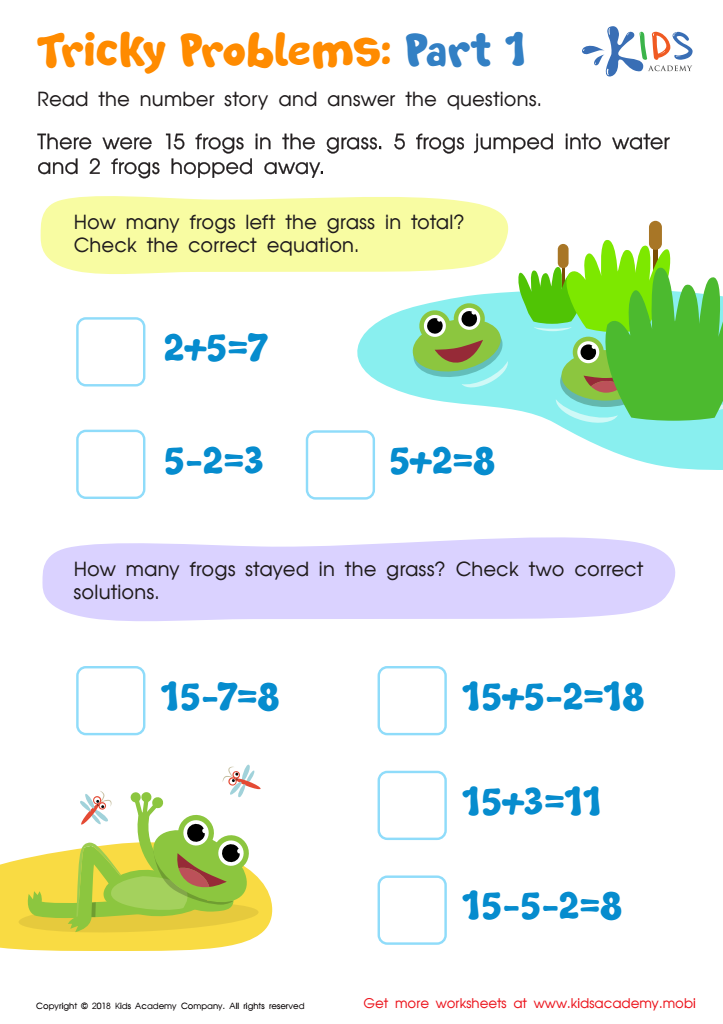

Tricky Problems Worksheet: Part 1


Subtracting Socks Worksheet
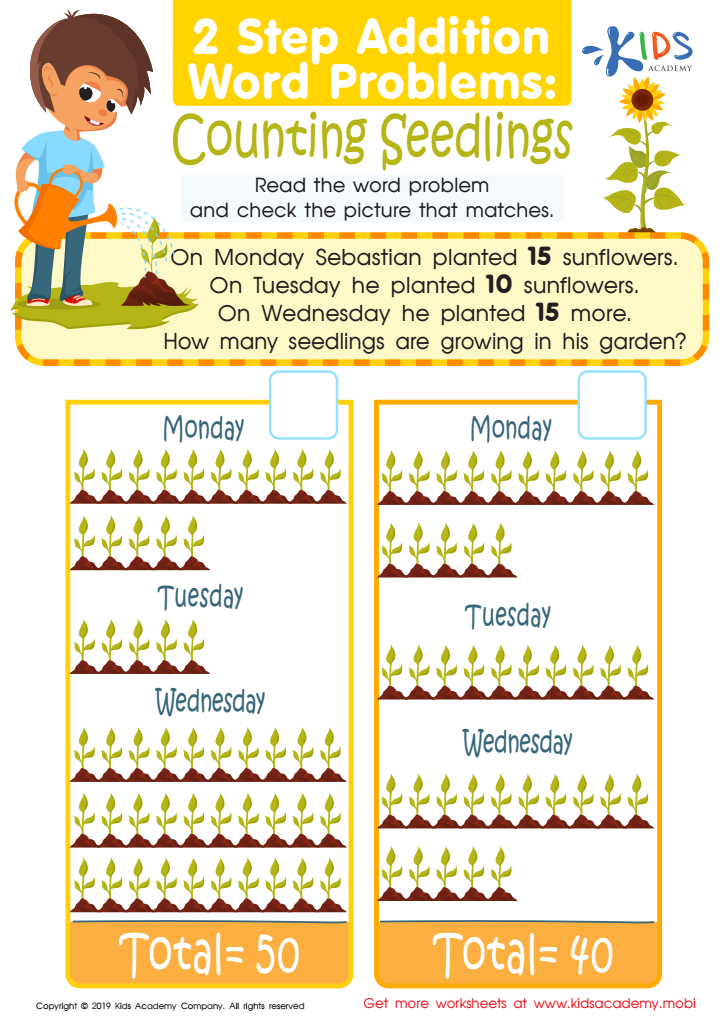

Counting Seedlings Worksheet


Enrichment -2 Step Word Problems Worksheet
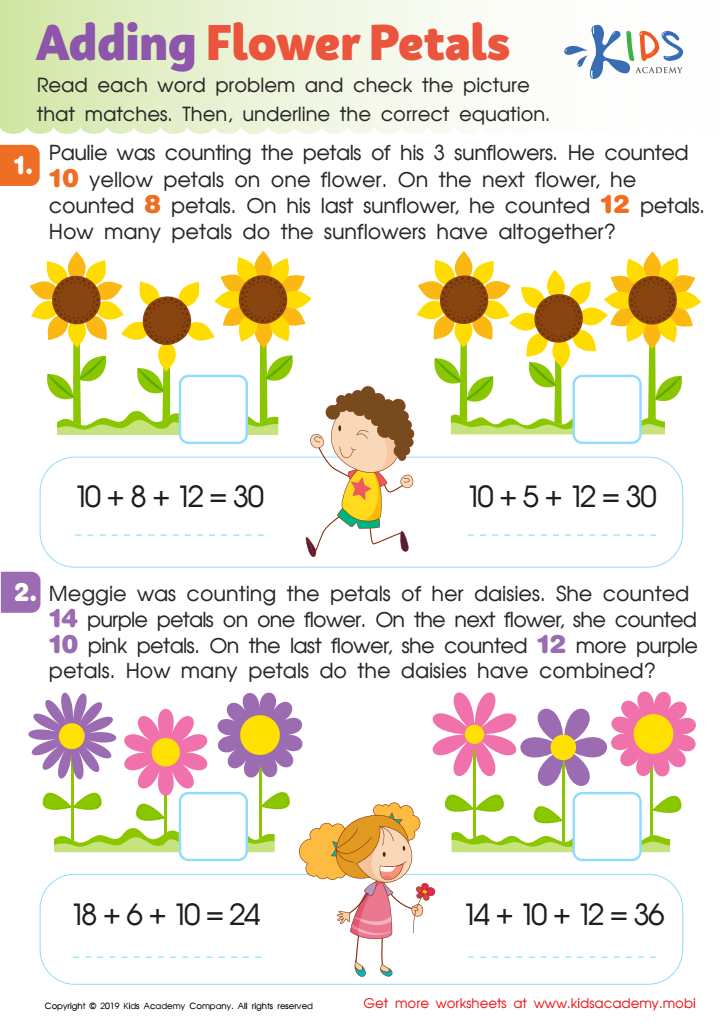

Adding Flower Petals Worksheet


Fruity Problem Solving Worksheet


Visiting a Volcano Word Problems Worksheet
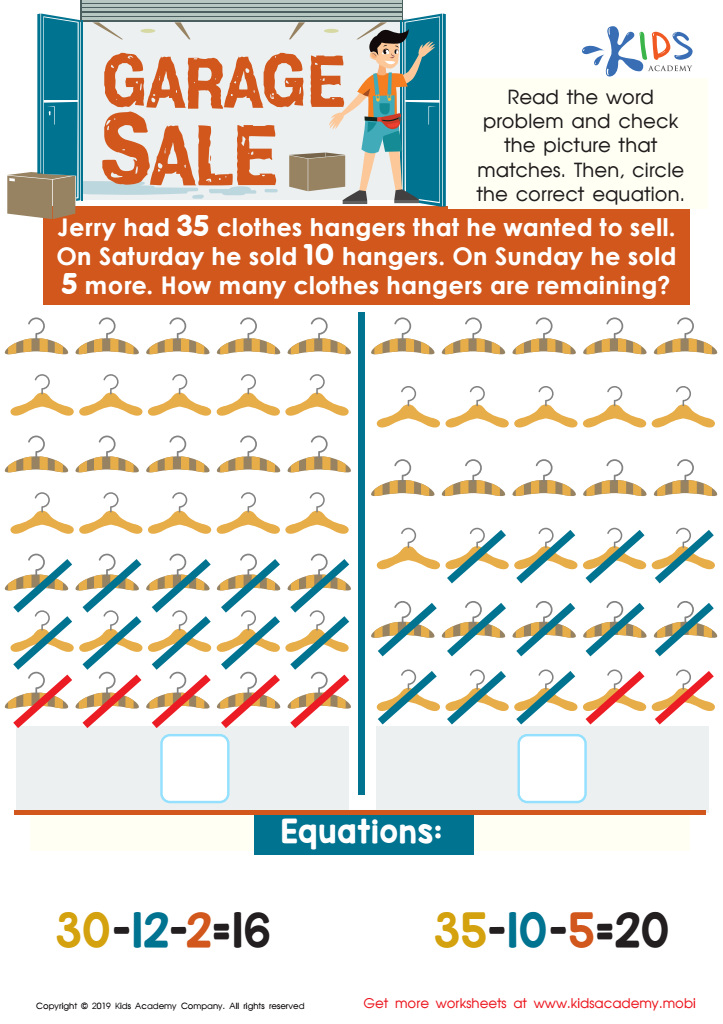

Garage Sale Worksheet
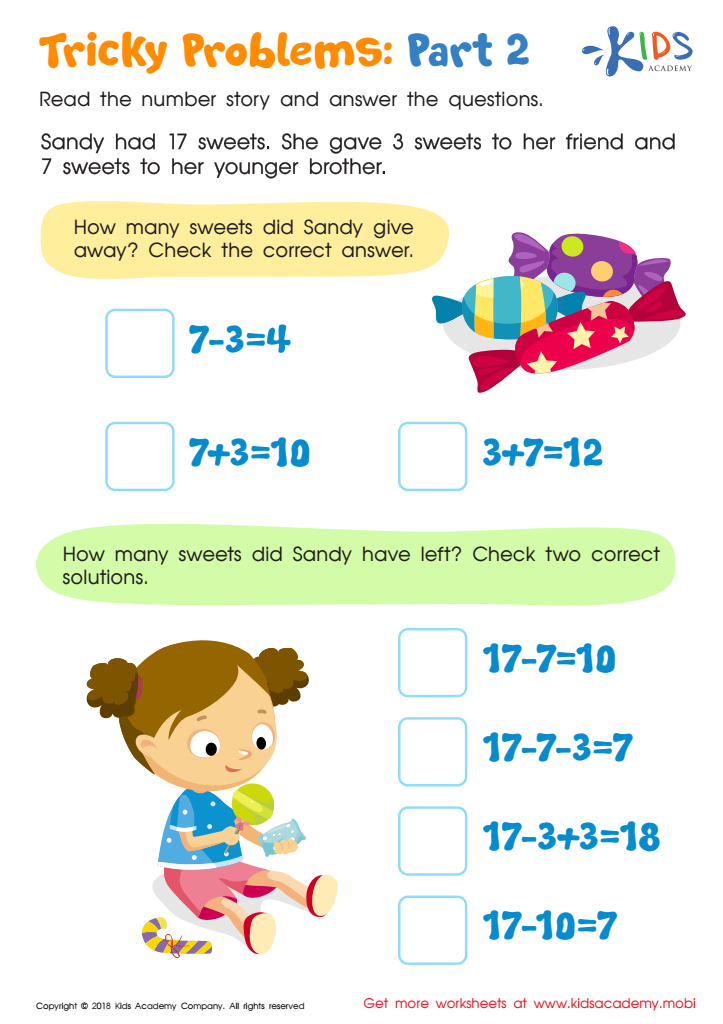

Tricky Problems Worksheet: Part 2
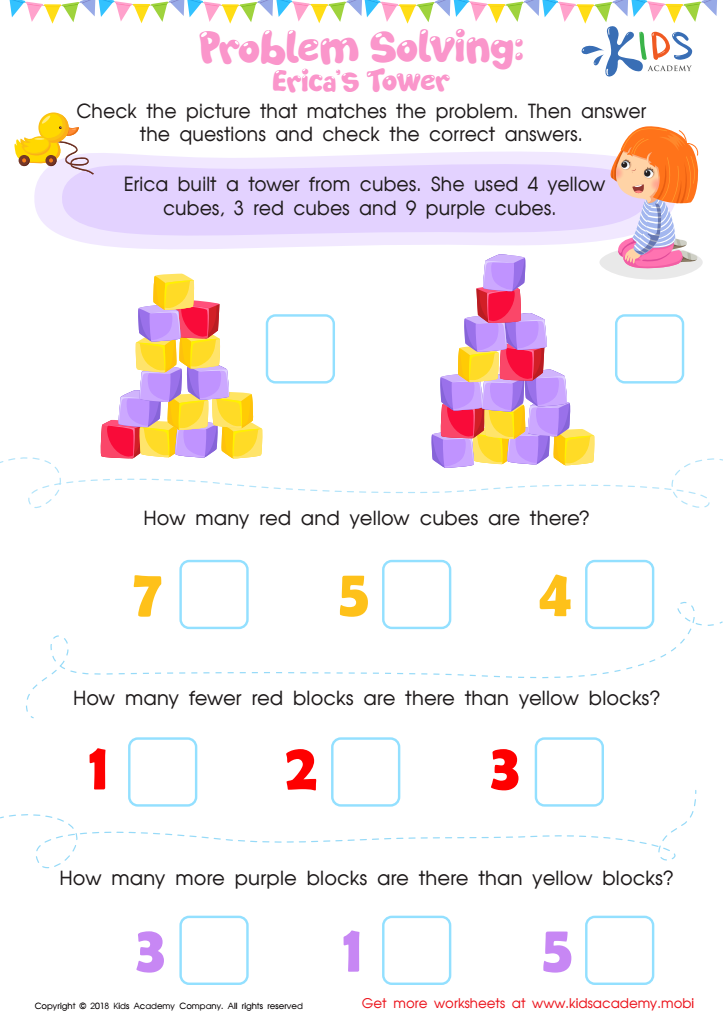

Problem Solving: Erica's Tower Worksheet
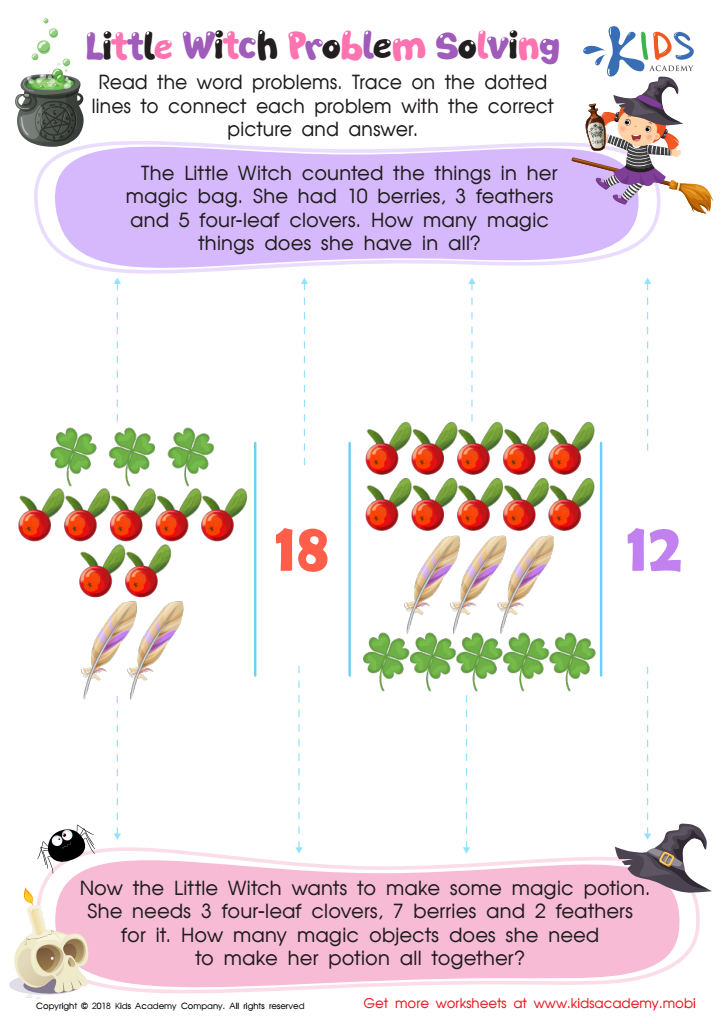

Little Witch Problem Solving Worksheet
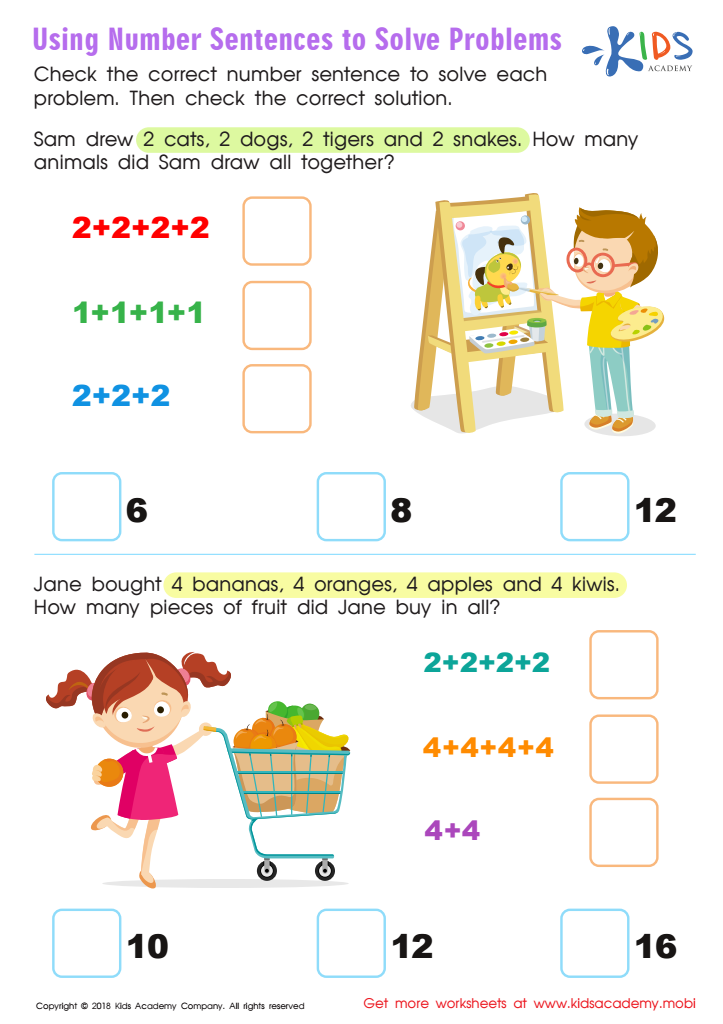

Using Number Sentences to Solve Problems Worksheet


Animals of Amazon Worksheet
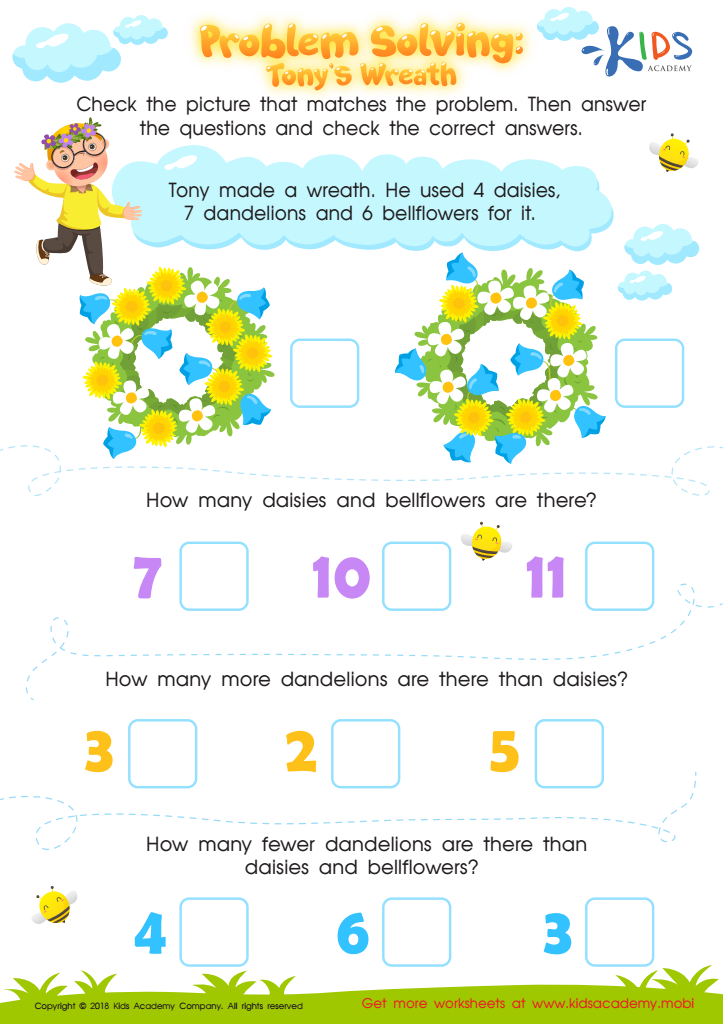

Problem Solving: Tony's Wreath Worksheet
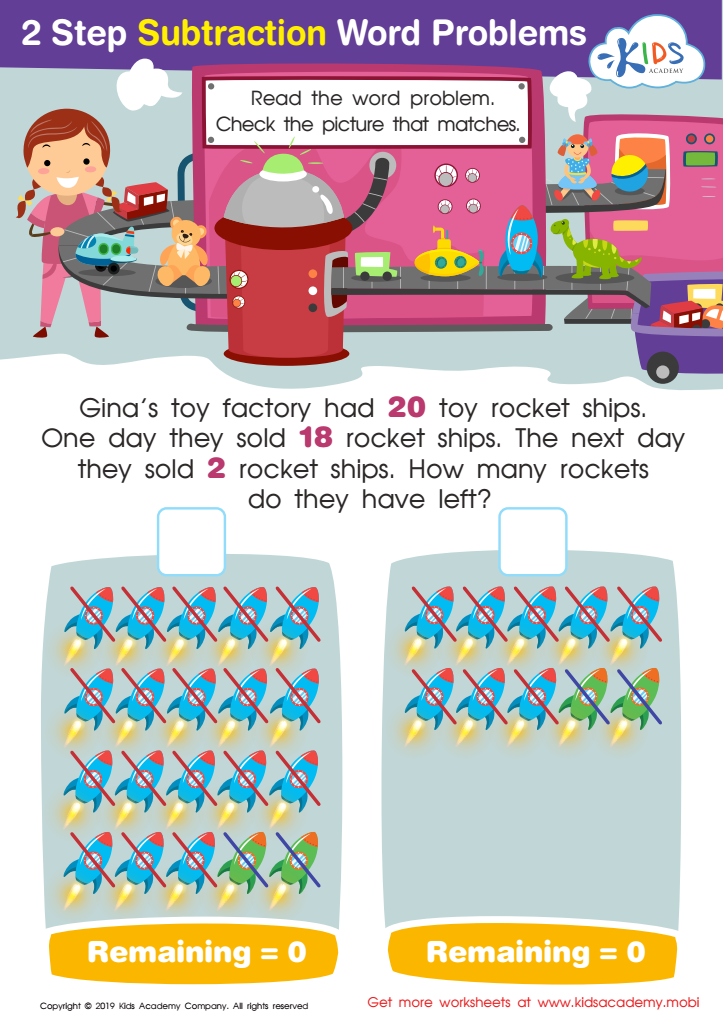

Step Subtraction Word Problems Worksheet
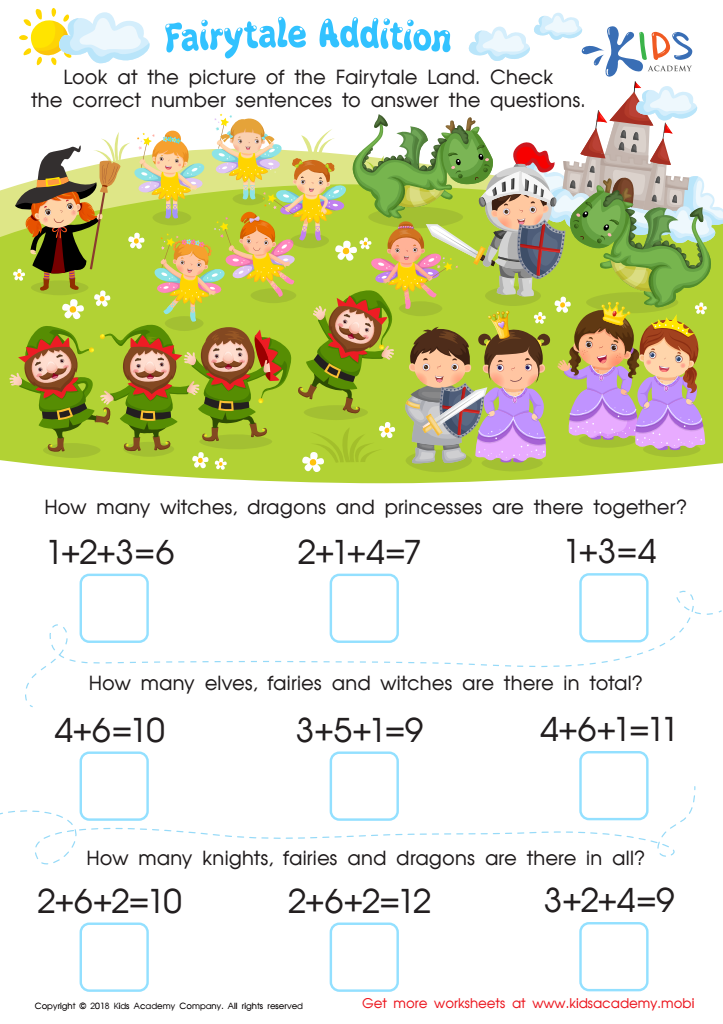

Fairytale Addition Worksheet
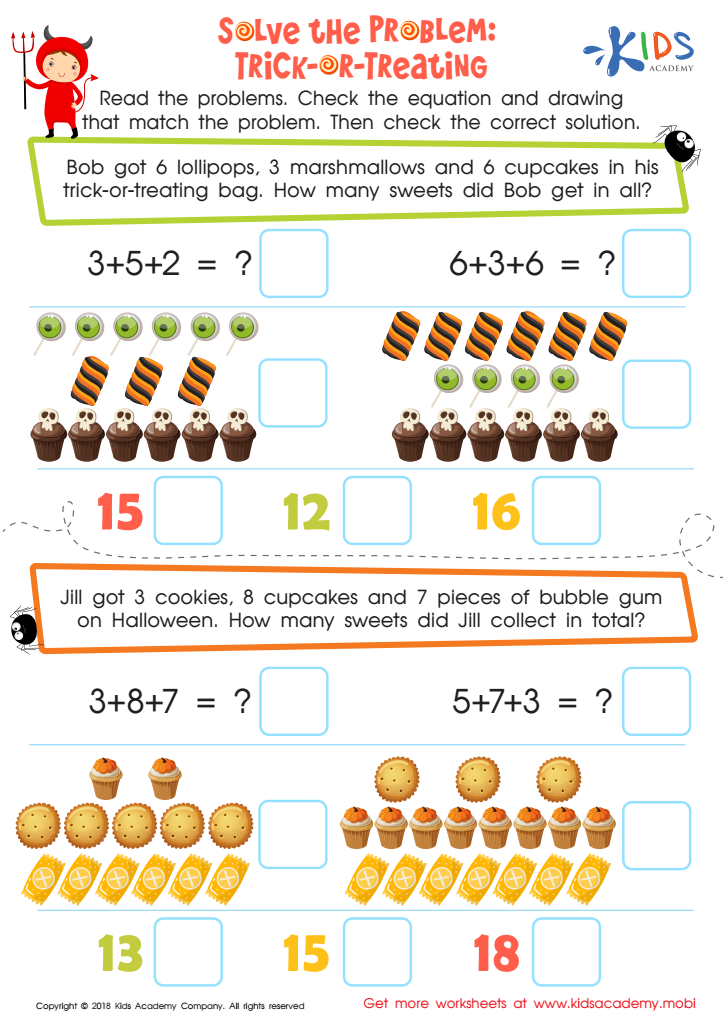

Solve the Problem: Trick–or–treating Worksheet
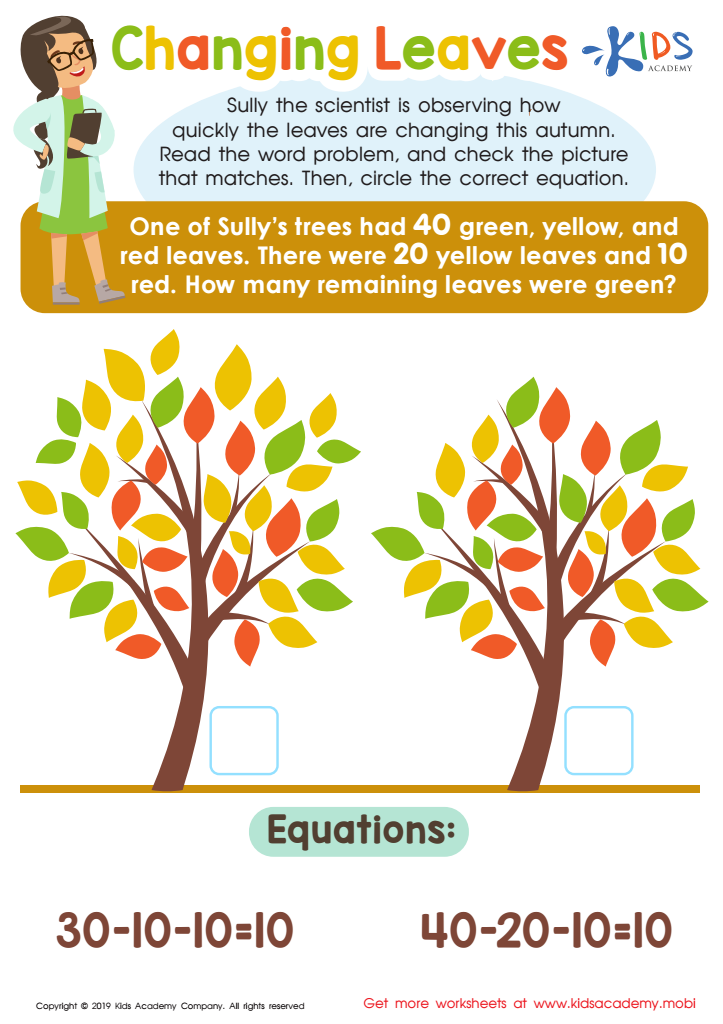

Changing Leaves Worksheet


Addition and Subtraction: Word Problems Worksheet
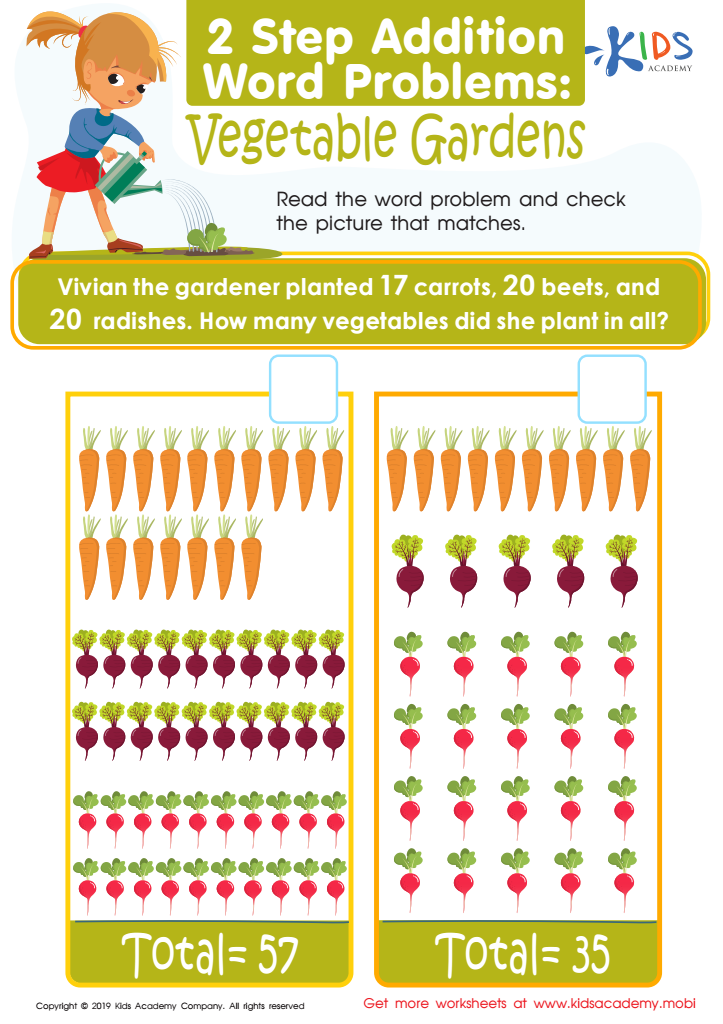

Vegetable Gardens Worksheet


Party Problems Worksheet
The Value of Two-Step Word Problems in School Homework Sheets for Eight-Year-Olds
As children reach the age of eight, their mathematical skills are ripe for expansion and deeper understanding. At this stage, they are typically in the second or third grade, a critical period for cultivating foundational skills that support higher-level math concepts. Among the most beneficial tools used in classrooms and as school homework sheets are two-step word problems. These worksheets are not only essential in applying real-life scenarios to math lessons but also crucial in developing a child's cognitive and problem-solving skills.
Why Focus on Two-Step Word Problems?
Two-step word problems require a child to make use of multiple mathematical operations to arrive at a solution. For example, a problem might first ask for the addition of two numbers, followed by multiplying the sum by another number. This process mirrors many real-world situations where problems are not solved through a single step but rather through a series of logical progressions.
Developing Critical Thinking Skills
One of the primary advantages of two-step word problems in school homework sheets is their ability to enhance critical thinking skills. At the age of eight, children are developing the ability to think more abstractly and logically. These problems teach them to not only see math as a series of numbers but as a tool to solve problems that may have multiple layers.
Enhancing Reading and Comprehension
Math is not just about numbers. The inclusion of word problems in school homework sheets also boosts reading comprehension. Children must read, understand, and dissect the problem presented to determine what is being asked and the steps necessary to solve it. This practice enhances their ability to comprehend and interpret textual information, which is beneficial across all subjects.
Encouraging Perseverance and Patience
Two-step word problems can sometimes be challenging, requiring children to spend more time and thought to reach the correct solution. This process is invaluable in teaching patience and perseverance, qualities essential throughout their educational journey and beyond. By tackling complex problems at a young age, children learn the importance of persistence and the rewards of hard work.
Building Confidence Through Mastery
As children practice and become proficient in solving two-step word problems, their confidence in their mathematical abilities grows. School homework sheets provide a structured path towards this mastery, allowing children repeated practice in a supportive environment. Each problem solved adds a building block to their self-esteem and their belief in their ability to tackle academic challenges.
Preparation for Future Mathematical Concepts
Two-step word problems pave the way for understanding more complex mathematical and scientific concepts later in school. As they progress through grades, the problems will involve more steps and require integrating different areas of math and logic. Early familiarity with breaking down a problem into manageable parts and using a step-by-step approach to solve it equips children with the skills necessary to handle algebra, geometry, and even basic calculus in future years.
Application in Everyday Life
One of the most significant benefits of two-step word problems is their ability to connect classroom mathematics to real-world situations. Children often question the practical application of what they learn in school, but these problems provide clear examples of how mathematics is relevant. Whether calculating change while shopping, planning time management for daily activities, or figuring out quantities needed in recipes, the skills developed from these worksheets are directly applicable to everyday life. This relevance helps children see the value of their education and motivates them to engage more deeply with the material.
Supporting Diverse Learning Styles
School homework sheets that focus on two-step word problems cater to various learning styles. Visual learners can benefit from drawing out the problems, kinesthetic learners can use physical objects to act out the problems, and auditory learners can discuss the problem-solving steps with parents or peers. This versatility ensures that children with different learning preferences can approach the tasks in a way that best suits their individual needs, promoting a more inclusive and effective learning environment.
Fostering Cooperative Learning and Discussion
When incorporated into school homework, two-step word problems can also foster an environment of cooperative learning. Parents and siblings can participate in discussing these problems, guiding the child through the reasoning process and encouraging different perspectives. This not only reinforces the child’s learning but also promotes valuable social skills like communication and collaboration.
Conclusion
The inclusion of two-step word problems in school homework sheets for eight-year-olds is more than just an academic exercise; it's a multifaceted educational tool that supports and enhances cognitive development, problem-solving skills, and practical application of knowledge. These worksheets prepare children not only for advanced mathematical concepts but also for real-life challenges, making them an essential part of the educational curriculum for young learners. By engaging with these problems regularly, children not only sharpen their mathematical abilities but also grow into more confident, capable, and resilient individuals.
 Assign to My Students
Assign to My Students






